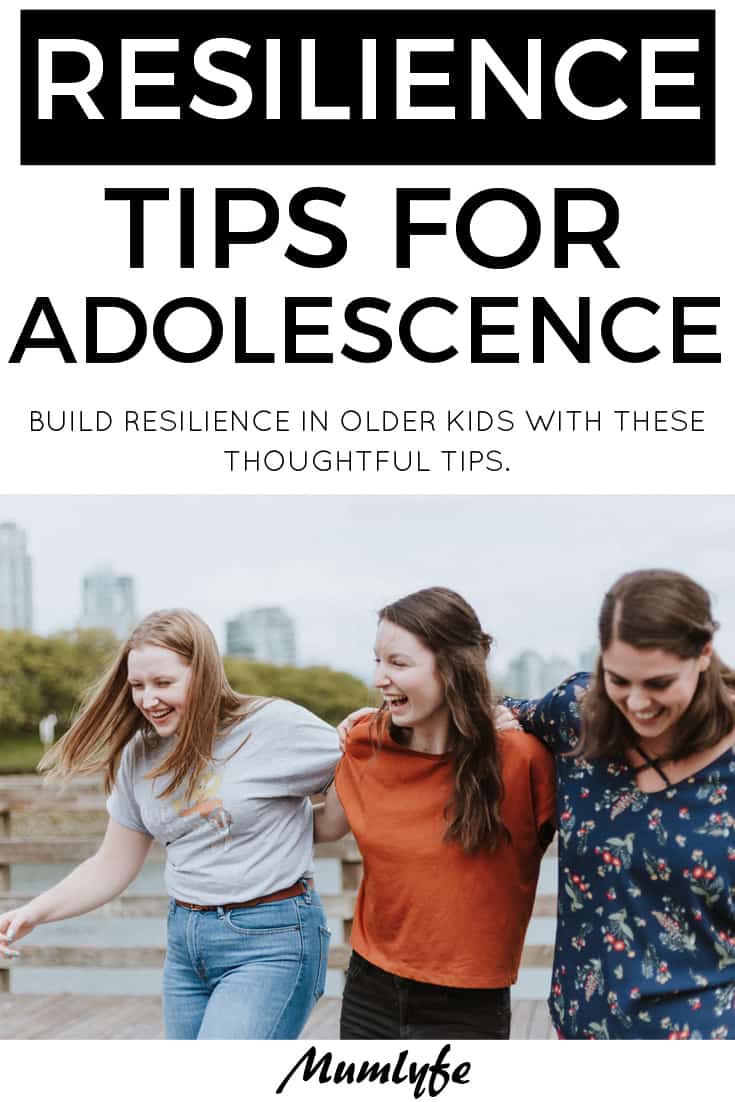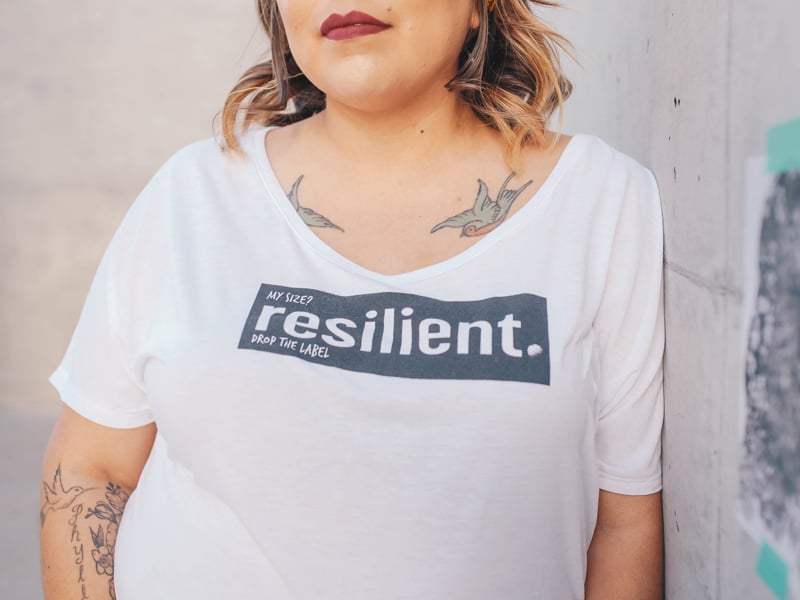There’s a resilience crisis brewing and our kids are in the thick of it. Change is an expected part of modern life and the ability to cope with it an important aspect of good mental health. Helping our kids build resilience is an important part of parenting them.
Sometimes the word “resilient” is a bit misleading, however. True “resilience” means “the ability to return to original shape or form”, but it is very rare for setbacks to leave a person completely unchanged. The best we can hope for is to help our children build resilience to cope with change and adversity in a way that leaves them feeling satisfied and as stress-free as possible.
Resilience is basically a person’s ability to handle change and adversity. How well they manage setbacks, new circumstances, problems or crisis. Resilient people are the ones at the centre of the storm guiding people to safety, arranging for emergency supplies and working out a plan. The less resilient amongst us are panicking and calling for our mum…
Natural resilience
Some kids are ‘naturally’ more resilient than others. Straight off the bat, those with an optimistic personality will generally find change far more manageable than the more pessimistic among us. Luckily, there are lots of things we can do to nurture that natural resilience, or even create it from scratch, in our pessimists.
This might help: The challenge of parenting a pessimistic child
“Let them fail“, is certainly one way to build resilience. But it’s not the only way. Here are ten more important ways to build resilience. I’ve based my ideas on a short course I did on The Resilience Doughnut created by Lyn Worsley some time ago. Lyn’s work is well worth a look for any parent – her book has become one of my parenting bibles. When it came time to write this piece, I naturally started by researching further around the “seven factors” Lyn used to make up the resilience doughnut.
10 ways to build resilience in older kids
1. Communicate openly and honestly
Lots of parents try to keep the “harder” parts of life from their kids, even when they ask questions about things like money problems, marital disharmony, child abuse or other events they see in the media. While it’s tempting to shield our kidsfor as long as we possibly can, it makes sense to provide an open, honest answer that is appropriate to their age and personality.
Being able to discuss the negative side of life helps them to understand that “bad things” happen, but it’s not the end of the world. Explaining things like, “sometimes people might have a fight even though they love each other very much. Just like you sometimes fight with your sister, and you still love her…” or “I don’t know why people do awful things to kids, but I do know that we do everything we possibly can to stop them.” Make sure you have lots of time available to answer all of their questions.
2. Keep listening as they explore their feelings
Believing that their parents (or other trusted adults) really value what they have to say and trust them to make their own decisions, is an important part of building resilience in kids, especially teens. We can all be a bit guilty of telling our kids how they should feel, rather than listening to how they really feel. We are so determined that they will love the world and all things in it, that we forget that life isn’t actually like that. “How fantastic is getting a B!” you squeal. Actually, Mum, I really wanted an A.
We can all be a bit guilty of telling our kids how they should feel, rather than listening to how they really feel.
Hard though it is, we’ve got to stop panicking when our kids feel bad and simply listen to the reason why. Many of us, on hearing a setback (this is me to a T), launch straight into “problem solving mode”. Rather than asking my kids how they think something should be fixed, I immediately start brainstorming ways I think things should be fixed.
Remember, our job is not to solve our kids’ problems, our job is to show them that they are perfectly able to solve their own.
But don’t go crazy: Why we need to stop being so available to our kids
3. Help them get to know what they’re “good at”
Kids who think they are “good at” something are more willing to tackle new things and have a stronger sense of self. Remember, it doesn’t matter that you think they’re good at something, they need to agree!
The best thing we can do is encourage them to have a go at just about anything that takes their fancy and see what “sticks”. Remind them that you don’t have to be “good at” something to enjoy it, and encourage them to keep on going if they really want something but are struggling to get there.
Some kids find it hard to focus on the things they do well and others don’t actually value the things they can naturally do well. Help your child learn to value their assets by finding fantastic role models (real life, celebrities, historical figures, etc) to impress them with.
More on this: Strengths-based parenting: Focus on the cans, not the can’ts
If you still can’t convince them, help them set up a step-by-step approach to build skills in the area they are interested in. Focus on how valuable their ability to work hard to achieve their goals is – an incredible talent they will have for life.
4. Make sure they know their wider family well
Knowing they belong to an extended family – grandparents, aunts, uncles, cousins – is very important to most kids. Being a part of a large family and establishing their place within it is comforting for a kid of any age. Having many people in their life who care for them (almost!) as much as their parents provides a great sense of security and confidence. It also helps for them to have a family confidant when they no longer want their loving parents involved (hello, teens!).
Past generations spent more time with their extended family and had a stronger sense of being “a Thompson” or “a Smith” or “a Papadopoulos”. Family gave them a rock-solid sense of identity and confidence – you knew that someone always “had your back”. Many of us might not be fortunate enough to live as closely as previous generations of families did, but we can use modern technology and ideas like this “family book” to bring our children closer to their wider family unit.
 5. Engage with their school community
5. Engage with their school community
While our kids no longer want to see our lovely faces at the school gate or canteen, they still get a sense of security knowing that we are part of things. There are of course many factors that influence how well our children do at school (both socially and academically), but here are three that matter a lot to most kids.
• They feel like they have something to contribute that is valuable
This touches on what they consider they are “good at” (see above) and us helping them see the value of what they contribute. Often the most valuable contribution a person can make at school is to be a good friend and a good listener.
• They feel they have a connection with a particular teacher
They will hopefully form a bond with a teacher, who may not even be their own. This teacher will generally have ‘extra time’ for them and cherish their individuality. They believe in them.
• They are involved
Not every kid is a ‘joiner’, and certainly by high school there is a lot of resistance from some towards getting involved at school. But do press them to find ‘something’ that suits them.
6. Get involved in the wider community
Many families gain a sense of community through their religious group or being involved in a local club. For older kids, having relationships with adults and kids of all ages who are not part of their usual social or school group is an important way to build resilience. We all become fixed by the “roles” we play in life and tweens and teens are particularly vulnerable to this. At school the role of “clown” might already be taken, but at the Rugby club your son is known as the funny one.
Often we forget the importance of “other people” in our kids’ lives. From a very young age our children have the potential to develop strong, nuturing relationships with people beyond their immediate family.
Put them to work: 50+ jobs for teens
7. Help them develop strong friendships
It’s no surprise that having close friendships is an important way to build resilience. More than any other relationship, an adolescent “owns” their friendships. Family is just “there”, but a friendship is something they made all on their own. Friends remind us that we are accepted “just because we are us” and not because we are related or bound to be with someone. For this reason, even without the fun and support they offer, good friendships are vital for our general well being.
Some kids make friends a lot easier than other kids, but all kids have the capacity to be a wonderful friend. Talk to your adolescent about the qualities they think a good friend needs to have and work with them to develop those qualities themselves.
8. Sharpen their self-compass
A strong structure of core-beliefs about ourselves becomes an unbreakable foundation for self-worth, no matter what those beliefs are or where they come from. If we wholeheartedly believe something, then there are very few things that can happen that will shatter those beliefs.
Obviously, we want our children’s compass to be full of positive, optimistic kinds of beliefs that foster an adaptable, pragmatic attitude towards external events. Rather than internalise everything that happens in life (“He’s not speaking to me, I must have done something wrong”), build resilience so you can hold fast to core beliefs and quickly externalise a situation (“He’s not speaking to me, but I haven’t done anything intentionally wrong, there must be something wrong with him today, I hope he’s okay, I’ll go and check in with him.”)
9. Find a sport they love
An ongoing commitment and mastery of some form of exercise is also a factor in determining how resilient a person is. Researchers have determined that the physical benefits and stress-relieving properties of high-intensity exercise contribute to overall brain health, which contributes to a person’s overall capability when challenged. No surprise here, of course. We’ve long known that daily exercise is one of the keys to a happy life.
10. Practise mindfulness
Mindfulness – particularly the ability to be with oneself – helps a child set their head in a ‘neutral’ position when faced with difficulties. In a neutral zone, we are neither positive nor negative, merely aware and reacting. Mindfulness helps an adolescent face up to life’s negatives rather than avoid them. It helps ‘toughen up’ our brain, leading us to a place where we allow life to happen without judgement or avoidance. In other words, mindfulness is a key element to build resilience!
How do you build resilience in your kids?
Feature image by Priscilla Du Preez; 2 by Drop the Label Movement; 3 by Jezael Melgoza




To raise well-adjusted kids, two words are all you need | Mumlyfe
Tuesday 4th of February 2020
[…] this is important. I’ll confess upfront that two words are probably not all you need to raise well-adjusted kids. You also need bucket loads of patience and a Teflon-like ego. Even well-adjusted kids are a […]
My daughter has no friends and I don't know why | Mumlyfe
Wednesday 20th of November 2019
[…] Related: 10 ways to help kids build resilience […]
5 ways to build your parental resilience | Mumlyfe
Thursday 10th of October 2019
[…] More on this: 10 ways to help kids build resilience to better cope with life […]
Neuroscience is unlocking the mysteries of the teen brain | Mumlyfe
Tuesday 7th of May 2019
[…] Related: 10 ways to build resilience to help kids cope with life […]
Lawnmower parents: How do they find the time and why? | Mumlyfe
Sunday 24th of March 2019
[…] This might help: 10 ways to help kids develop resilience to cope with life […]